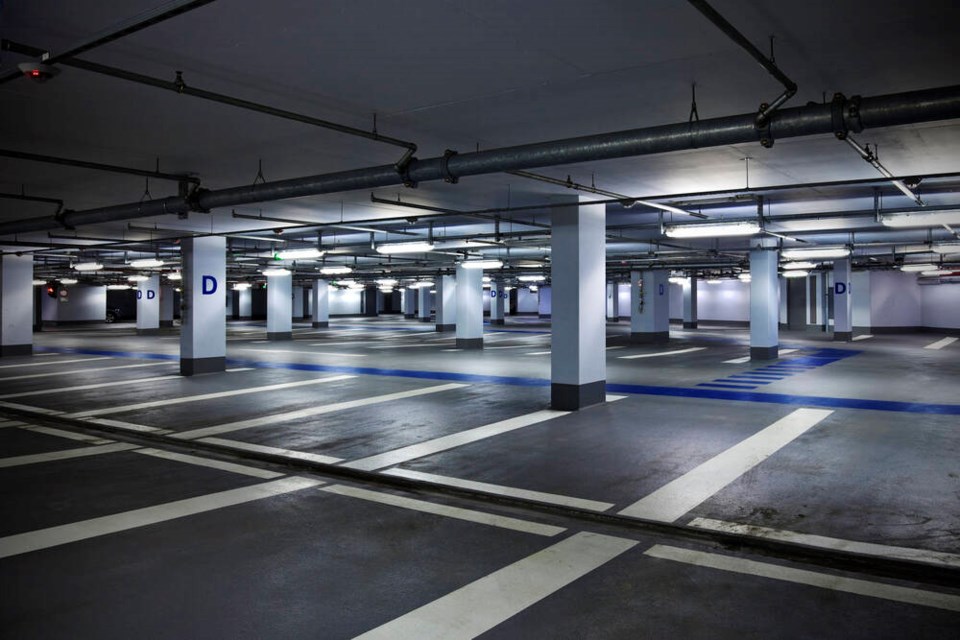Burnaby councillors shot down a proposed policy that would allow developers to reduce the number of parking stalls built near SkyTrain stations – even though the councillors agree with the principle.
The policy initially drew concerns at a council meeting in June.
It was developed specifically in response to a proposed 14 levels of underground parking in an 80-storey tower development steps away from Lougheed SkyTrain station.
The 14 floors are made up of 1,612 residential parking spots, a number mandated by the city’s bylaws for minimum parking requirements.
The interim policy for developments within 800 metres of a SkyTrain station would have reduced the parking minimum from the current requirement of 1.1 parking spots per strata condo to 0.6 spaces per unit – so the Lougheed development could reduce its parking by 45 per cent to 879 spots.
But the proposed policy would have also required developers to pay $40,000 per reduced stall.
For Pinnacle International, the developer of the Lougheed condo towers, to reduce its parking requirement, it would have to pay $40,000 for each of the parking stalls it doesn’t build.
It would cost Pinnacle almost $30 million.
The city would have funnelled that money (called payment in lieu) to its active transportation initiatives.
Local developers widely support reducing parking minimums, as parking stalls can be expensive to build (each stall costs about $50,000 to build, and costs can rise from there). Building parking can also increase construction time.
But developers vehemently opposed Burnaby’s proposed payment in lieu, saying it would either increase the cost of housing or jeopardize their developments.
Councillors reject policy
The planning and development committee unanimously rejected the interim policy to reduce parking minimums on July 12.
Despite rejecting the policy, Coun. Alison Gu strongly advocated for reducing parking near transit.
She rejected it as she said work is already underway on a “more robust” long-term parking policy.
She added Burnaby has historically required an overbuilding of parking.
Gu said she would like to see a policy grounded in evidence for what the city’s lowest possible parking need is, because developers can always build more than the minimum based on their site-specific studies which show them what consumers are willing to purchase.
She said the city isn’t doing the work to meet its transportation targets – which include reducing its parking requirements.
Those targets include moving away from personal vehicles to the point where three-quarters of all trips are made by public transit and active transportation (such as walking, cycling and rolling) by 2050. The city aims for half of all trips to be made by public transit and active transportation in the next seven years.
The Burnaby Transportation Plan says that target will be met by discouraging private vehicle trips and encouraging sustainable transportation options.
Coun. Sav Dhaliwal rejected the plan as he wanted a more comprehensive policy that didn’t respond to a specific development.
He said the city’s parking needs depend on the neighbourhood.
Dhaliwal noted the city’s proposed policy was based on analysis commissioned by Pinnacle International for the Lougheed development and said he would prefer independent reports.
He further questioned whether there would be fewer cars on the road in 25 years.
“I’d like to have some analysis on that, not someone having (an) opinion about, well, ‘Cars are disappearing,’” Dhaliwal added.
However, in 2021 Dhaliwal voted in favour of the Burnaby Transportation Plan, which committed to reducing private vehicle trips and reducing or removing minimum parking requirements.
Engineering staff, who are already developing a transportation demand management plan, will give recommendations and further analysis on reducing parking minimums along with that report.





